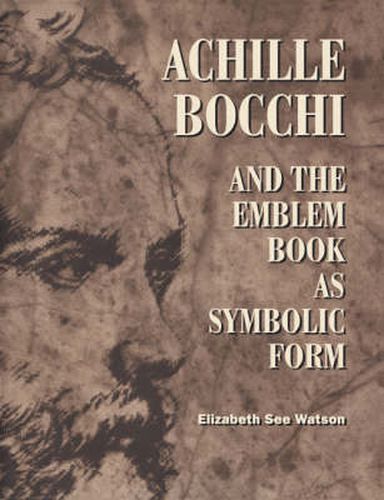Readings Newsletter
Become a Readings Member to make your shopping experience even easier.
Sign in or sign up for free!
You’re not far away from qualifying for FREE standard shipping within Australia
You’ve qualified for FREE standard shipping within Australia
The cart is loading…






Achille Bocchi and the Emblem Book as Symbolic Form is an introductory study of the Symbolicae Quaestiones, published in Bologna in 1555, in which Elizabeth See Watson argues that the context of the Symbolicae Quaestiones reflects the intellectual and cultural currents of the university and the literary academies rather than the hidden heresies of the sixteenth century. In order to make Bocchi’s work more accessible to readers, the first part of the book provides a biographical context. The second part explores poetic theory and the symbol in the development of Bocchi’s symbols, then examines the rhetorical strategy of paradox and the symbolism of mythology in the way they shape the content of the work. Bocchi fashioned his symbols, each one an emblematic unit of poem, engraving, and motto, from a mix of classical and post-classical myth, symbol, and fable and from allusions to his contemporaries. The iconography of these emblematic units and of the closely related facade design for Bocchi’s palazzo, serves as a programmatic statement for Bocchi’s interrelated projects.
$9.00 standard shipping within Australia
FREE standard shipping within Australia for orders over $100.00
Express & International shipping calculated at checkout
Achille Bocchi and the Emblem Book as Symbolic Form is an introductory study of the Symbolicae Quaestiones, published in Bologna in 1555, in which Elizabeth See Watson argues that the context of the Symbolicae Quaestiones reflects the intellectual and cultural currents of the university and the literary academies rather than the hidden heresies of the sixteenth century. In order to make Bocchi’s work more accessible to readers, the first part of the book provides a biographical context. The second part explores poetic theory and the symbol in the development of Bocchi’s symbols, then examines the rhetorical strategy of paradox and the symbolism of mythology in the way they shape the content of the work. Bocchi fashioned his symbols, each one an emblematic unit of poem, engraving, and motto, from a mix of classical and post-classical myth, symbol, and fable and from allusions to his contemporaries. The iconography of these emblematic units and of the closely related facade design for Bocchi’s palazzo, serves as a programmatic statement for Bocchi’s interrelated projects.